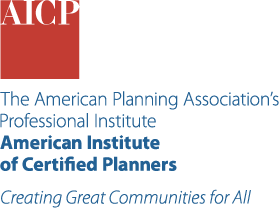Uncovering JAPA
How Libraries Became Community Resilience Hubs

Libraries are longstanding community resources for learning and enrichment. Beyond their collections, libraries are expanding their roles into various social services and information access systems. Can planners document and build on libraries' contributions to local resilience?
In "Libraries Are Resilience Hubs: Evidence From the Midwest" (Journal of the American Planning Association, Vol. 91, No. 1) Lucie Laurian, Evan Doyle, Iulian Vamanu, and Kara Logsden build on a survey of 415 library directors in 13 Midwestern states to inform planners on the roles, reach, and impacts of local libraries on socio-economic crises and disaster response.
Strengthening Community Resilience
Local public libraries are essential community assets. They serve community members daily and continuously adapt their services to their patrons' changing needs, often acting as first-response sites.
They are often de facto daytime shelters for the homeless and under-housed. Under the U.S. Federal Emergency Management Agency (FEMA) 2011 Stafford Act, which designated public libraries as essential community organizations, libraries assist with federal disaster response activities.
They serve as information-sharing hubs, distribute food and water, and act as warming and cooling shelters during extreme weather events. During the COVID pandemic, many libraries installed outdoor Wi-Fi hotspots. The authors found that an overwhelming majority of library directors saw these resilience-boosting services as part of their library's mission.
The majority of libraries are fully involved in their communities' economic development and social well-being. Libraries provide meeting spaces for nonprofit organizations and resources for business startups.
They provide free internet access, computers, and support for patrons who need help accessing online platforms for social services and job applications.
About half provide individualized one-on-one support for résumé writing, navigating job sites, and completing online applications. Libraries in urban, low-income areas are particularly attuned and responsive to their patrons' needs for economic advancement.
Planners and Library Partnerships
How can planners support these community powerhouses? Libraries are ready to deploy resilience activities aligned with their public service and information access missions, rendering them quasi-universal resilience resources and hubs. By providing lifeline services to minority and low-income residents and by increasing community resilience, libraries can reduce systemic inequities.
The authors took a specific look at the factors that support library service delivery, including libraries' revenues, and explored the relationships between library services and community characteristics. They found that libraries provide more services where needs were greatest: in more populated and lower-income (more urban) communities.
These findings call for planners' advocacy for expanding library resources in local budgeting processes and for greater collaboration with public library leadership and staff to build local socioeconomic and disaster resilience.
Key TAKEAWAYS
- Libraries support community and economic development by providing direct support to local businesses and patrons facing economic hardships.
- Libraries are resilience hubs in disasters and public health emergencies, from heat and cold waves to COVID-19 response.
- Planners can work with public libraries to increase local disaster preparedness, response capacity, and resilience.
Top image: Photo by iStock/Getty Images Plus
ABOUT THE AUTHOR


